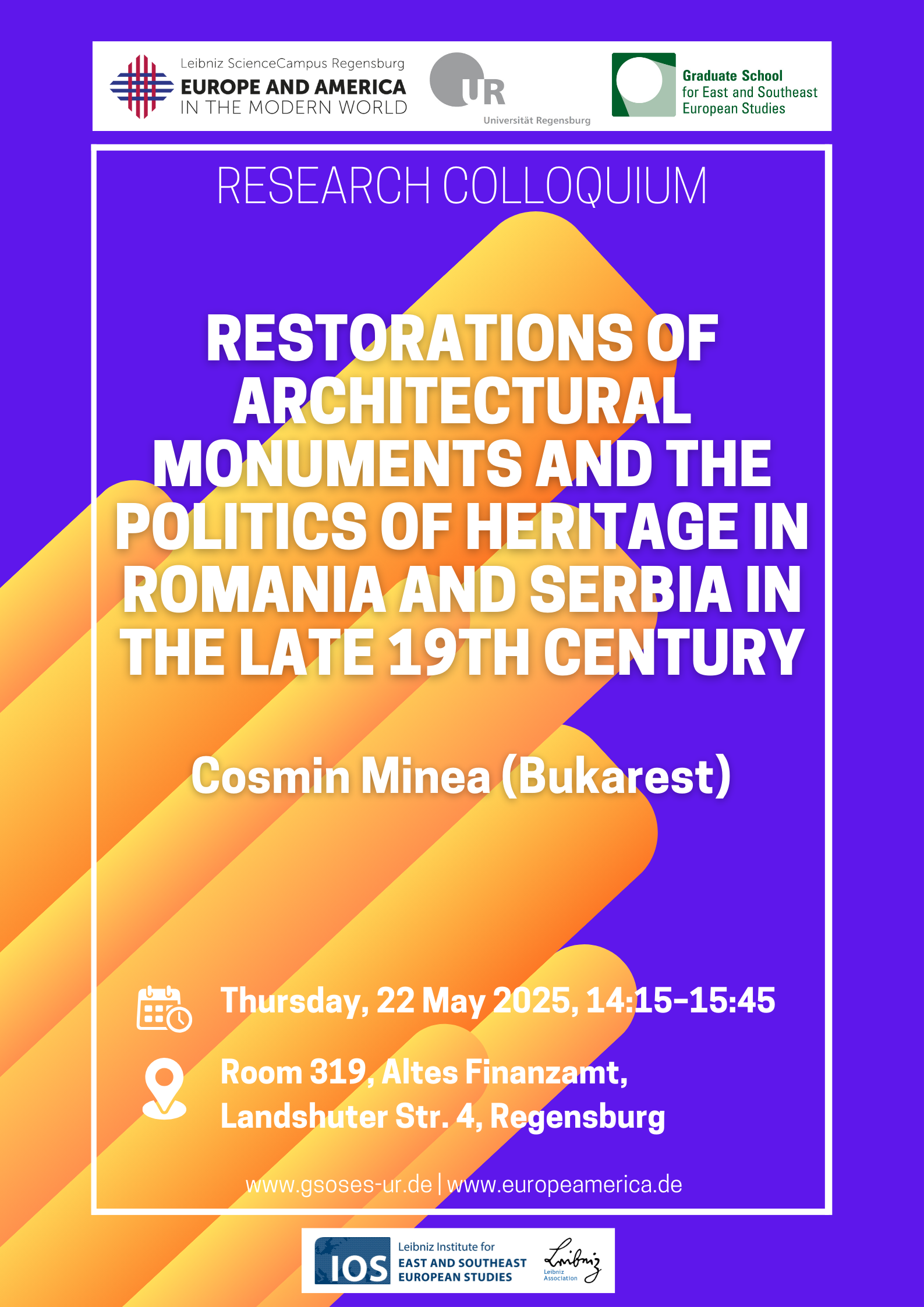Research Colloquium | Cosmin Minea (Bucharest/ Brno) | Restorations of Architectural Monuments and the Politics of Heritage in Romania and Serbia in the Late 19th Century
When? Thursday, 22 May 2025 | 14:15
Where? Room 319, Altes Finanzamt, Landshuter Str. 4
Abstract:
Towards the end of the nineteenth century, the recent independent states of Serbia and Romania undertook a very similar restoration project that transformed in a visual and symbolic manner one of their most famous Orthodox churches. In Romania, the French architect André Lecomte du Noüy led the restoration of Curtea de Argeș church (sixteenth century), where he added frescoes, interior and exterior decorations, monastery buildings and a chapel, turning the site into a symbol of Romanian heritage and the resting place for Romanian kings. Similarly, in Serbia architect Petar J. Popović led the restoration of Lazarica Church (fourteenth century), incorporating new domes, exterior decorations, and towers. Starting from these projects, the talk will reflect on the role of architectural monuments for the state-building, national ideology, religion and local communities in the two former Ottoman regions. It will also emphasize the role of transnational network of architects and specialists together with ideas about Byzantine Art in fin-de-siecle Europe.
Bio:
Cosmin Minea earned his PhD from the University of Birmingham in 2020 with a dissertation titled Old Buildings for Modern Times: The Rise of Architectural Monuments as Symbols of the State in Late 19th-Century Romania. His MA thesis, completed at Central European University in Budapest in 2014, was awarded the Hanák Prize for the best dissertation in the Department of History. Currently, he is Czech Science Foundation (GAČR) postdoctoral researcher with the project‘The First Histories of Architecture and the Creation of National Heritage in South-Eastern Europe (1860-1930). A Transnational Approach’ in the Art History Department at Masaryk University in Brno, and co-leader of the Environmental Humanities working group at the LSC partner institution the New Europe College in Bucharest.
His research focuses on the transnational networks of architects and intellectuals who, in late 19th-century Romania, were instrumental in shaping, restoring, and promoting historical monuments and heritage sites as part of wider efforts to forge a national cultural identity. More broadly, his interests lie in the architectural history and historiography of modern Central and Eastern Europe (19th and 20th centuries), with particular emphasis on how the region’s material heritage has been mobilised to craft new identities and cultivate political and cultural allegiances.
He has held fellowships at several prestigious institutions, including the Bielefeld Graduate School in History and Sociology, the Institut national d’histoire de l’art in Paris, the Leibniz Institute for European History in Mainz, and the New Europe College in Bucharest.
He has co-edited the volume Periodization in the Art Historiographies of Central and Eastern Europe, (New York: Routledge, 2022), together with Shona Kallestrup, Magdalena Kunińska, Mihnea Mihail, Anna Adashinskaya. His latest publication is ”Habsburg Scholars and Writings about Romanian Historical Monuments in the Late Nineteenth Century” in Julia Allerstorfer-Hertel, Monika Leisch-Kiesl and Karolina Majewska-Güdem (eds.), East Central European Art Histories and Austria. KU Linz Global Art History Series, (Bielefeld: Transcript Verlag, 2024) Click here for a full list of publications.
The Research Colloquium is organised jointly by the ScienceCampus and Graduate School for East and Southeast European Studies in Regensburg.

